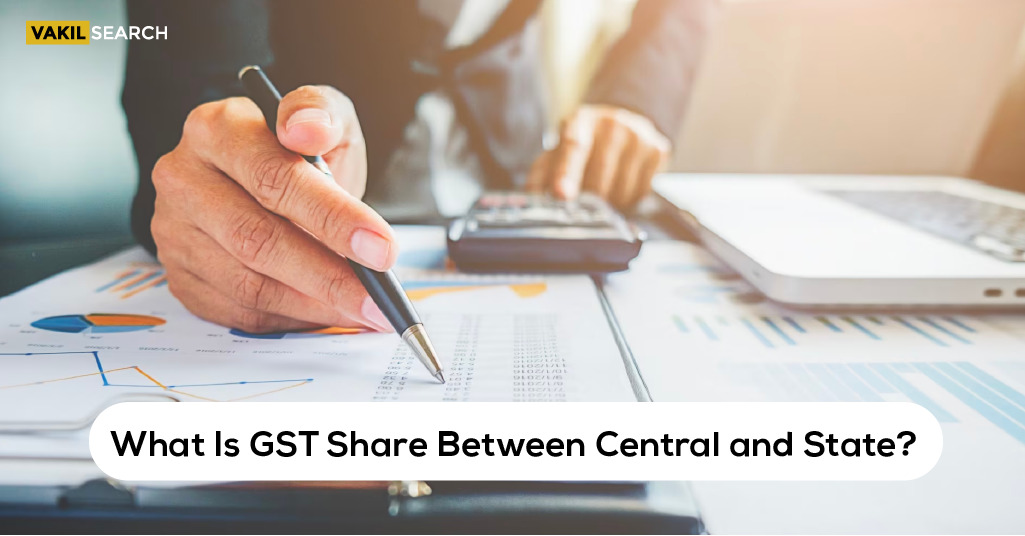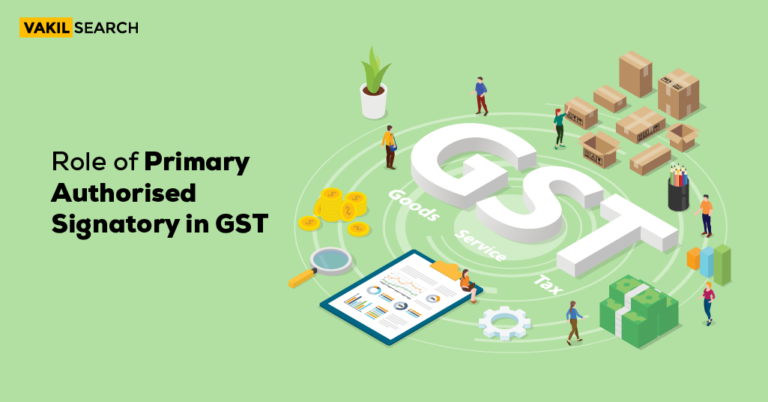Uncover GST fundamentals, CGST vs. SGST, dual taxation, four GST types, IGST division, and collaborative tax sharing between centre and state.
Goods and Service Tax (GST) is a comprehensive indirect tax levied on the supply of goods and services in India. It was introduced on July 1st, 2017, and since then, it has replaced multiple indirect taxes such as Value Added Tax (VAT), Service Tax, Excise Duty, etc. GST is a dual taxation system, which means that it is levied and collected by both the Central and State governments. In this article, we will discuss the GST share between Central and State.
What is IGST?
IGST, or Integrated Goods and Service Tax, represents a significant aspect of the Goods and Services Tax (GST) system in India. This tax is specifically imposed on interstate transactions involving the supply of goods and/or services, as well as on imports and exports. Governed by the IGST Act, it is the Central Government’s responsibility to collect taxes under this regime. The revenue collected is subsequently distributed among the various states. For instance, when a trader from West Bengal sells goods valued at ₹ 5,000 to a consumer in Karnataka, IGST is applicable due to the interstate nature of the transaction. If the GST rate on the goods is 18%, the merchant would charge ₹ 5,900 as the final price for the sold goods.
IGST offers several advantages. Firstly, it operates on a transparent and straightforward model, enhancing the efficiency of the taxpayer process. Additionally, the IGST amount is the sum of Central GST (CGST) and State GST (SGST). One notable benefit is the streamlined document verification process, which can be conducted online, eliminating the need for physical checks. Furthermore, IGST facilitates a smooth flow of funds without financial blockages, contributing to the efficiency of the overall taxation system.
What is UTGST?
UTGST stands for Union Territory Goods and Services Tax. It is a component of the Goods and Services Tax (GST) system in India. UTGST is applicable to the Union Territories of the country. Similar to the State Goods and Services Tax (SGST), UTGST is levied in addition to the Central Goods and Services Tax (CGST) on intra-Union Territory transactions. The revenue collected through UTGST contributes to the financial resources of the respective Union Territories.
In essence, UTGST, CGST, and SGST together constitute the three-tiered structure of GST, aiming to create a unified and harmonized tax system across the nation, including Union Territories. The introduction of UTGST ensures that Union Territories have their share of revenue to support governance and public services while adhering to the principles of the GST framework.
GST Share Between Central and State
The Goods and Service Tax Act provides for two types of GST – Central GST (CGST) and State GST (SGST). The Central Government collects CGST, and the respective state governments collect SGST. The GST revenue is shared between the Central and State governments in a ratio of 50:50 for most goods and services.
For instance, if a supplier of goods or services sells a product worth ₹ 100, he has to pay a total of 18% GST, split into 9% CGST and 9% SGST. Out of the ₹ 18, ₹ 9 goes to the Central Government, and the remaining₹ 9 goes to the respective state government.
Sometimes, the GST rate may vary for different goods and services. For instance, the GST rate for some essential items, such as food and healthcare services, is lower compared to the GST rates for luxury goods and services. In such cases, the GST revenue is shared in the ratio as decided by the GST Council.
Inter-State Supply of Goods and Services
For inter-state supply of goods and services, an additional tax known as the Integrated Goods and Services Tax (IGST) is levied. The Central Government collects the IGST revenue, which is shared between the Central and State governments as per the provisions of the GST Act.
For instance, if a supplier in Delhi supplies goods worth ₹ 100 to a buyer in Mumbai, he has to pay an IGST of 18% on the supply. Out of the ₹ 18, the Central Government retains ₹ 9, and the remaining ₹ 9 is shared between the Central and State governments in the ratio as provided in the GST Act.
Advantages of the GST Share between Central and State
Increased Revenue for the Government
The GST share between the Central and State has increased the revenue for the government. The GST system has made the tax collection process more efficient and transparent, increasing the government’s tax revenue.
Simplification of Tax System
GST has simplified the tax system by replacing multiple indirect taxes with a single tax. This has reduced the compliance burden for businesses and made the tax system more user-friendly.
Boost to the Economy
The GST shared between the Central and State has boosted the economy by reducing the cascading effect of taxes. Earlier, taxes were levied on taxes, which increased the cost of goods and services. However, with the GST system, the cascading effect of taxes has been reduced, which has reduced the cost of goods and services.
Impact on Businesses
Reduced Compliance Burden
The GST shared between the Central, and State has reduced the compliance burden for businesses as they only have to deal with one tax instead of multiple taxes. This has made it easier for businesses to comply with tax regulations, which has increased their efficiency.
Increased Competition
With the GST system, businesses can now operate on a level playing field as the tax burden is the same for all businesses, regardless of their size or location. This has increased competition among businesses, resulting in better consumer products and services.
Improved Cash Flow
The GST share between the Central and State has improved the cash flow for businesses as they do not have to keep funds aside for paying multiple taxes. This has allowed businesses to use their resources more efficiently, which has improved their financial performance.
Impact on Consumers
Reduced Cost of Goods and Services
The GST shared between the Central and State has reduced the cost of goods and services as the cascading effect of taxes has been reduced. This has led to lower consumer prices, which has increased their purchasing power.
Increased Transparency
With the GST system, the tax burden is clearly visible to consumers, which has increased transparency in the tax system. Consumers now have a better understanding of the taxes they pay, which has increased their confidence in the tax system.
Improved Quality of Products and Services
The increased competition among businesses, due to the GST share between the Central and State, has improved the quality of products and services. Consumers now have access to better products and services, which has increased their satisfaction.
Conclusion
In conclusion, the GST shared between the Central and State has brought about several positive changes in the indirect tax system in India. The dual taxation system has increased the revenue for the government, simplified the tax system, and boosted the economy. The GST Act provides for the sharing of GST revenue between the Central and State governments in a specified ratio, ensuring a balanced tax revenue distribution between the two levels of government. Vakilsearch can provide comprehensive support throughout the GST registration process, ensuring compliance with legal and regulatory requirements and helping clients achieve their goals using GST.
FAQs
What is the basic difference between Central GST and State GST?
Central GST (CGST) is levied by the central government, while State GST (SGST) is imposed by the state government. They apply to intra-state transactions.
Is GST both a central and state tax?
Yes, GST is a dual tax system, encompassing both Central GST (CGST) and State GST (SGST), ensuring a collaborative tax structure.
What are the basic four types of GST?
The four fundamental types of GST are Central GST (CGST), State GST (SGST), Integrated GST (IGST), and Union Territory GST (UTGST).
How is IGST divided between the central and state governments?
IGST is divided based on the destination principle, with revenue shared between the central and state governments.
Which type of tax is divided between the centre and state in the GST system?
GST is a cooperative federalism model where both the central and state governments share the revenue, fostering a collaborative tax approach.










